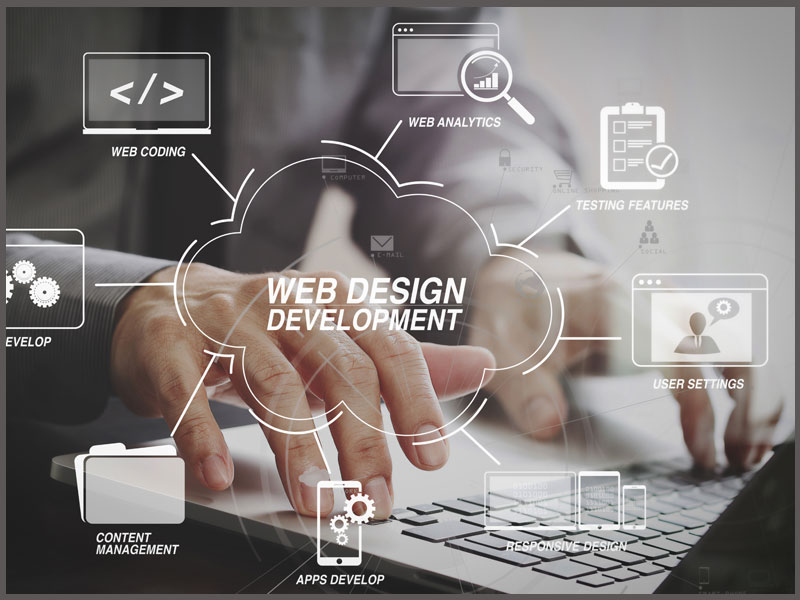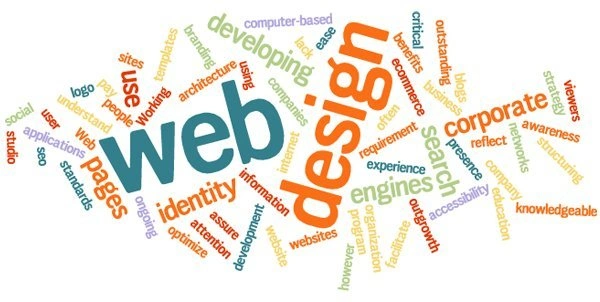Aligned Position Web Design: Transform Your Online Presence with Expert Web Design Services
Aligned Position Web Design: Transform Your Online Presence with Expert Web Design Services
Blog Article
The Very Best Kinds Of Website Design to Boost Individual Experience and Engagement
In the ever-evolving landscape of electronic communication, the performance of website design considerably influences user experience and involvement. Various style strategies, such as minimalist, receptive, and interactive formats, each offer special advantages that can deal with diverse individual demands. Understanding which sorts of Web style best serve these purposes can be critical for companies intending to boost customer fulfillment and retention. Nevertheless, the concern continues to be: which design elements genuinely resonate with users and foster significant involvement? The exploration of these concepts exposes critical insights that might redefine your method to website design.
Minimal Website Design
As digital landscapes come to be increasingly cluttered, minimal Web design has actually emerged as a powerful approach to boosting customer experience. This design ideology focuses on simpleness, concentrating on essential components while removing unneeded diversions. By utilizing enough white room, uncomplicated navigation, and a limited color palette, minimalist layout promotes clearness and guides individual focus to essential material.
The core principle of minimal website design is to produce a seamless communication for users. By lowering cognitive tons, customers can swiftly understand details without feeling bewildered. This direct technique not just enhances functionality yet additionally motivates involvement, as site visitors are extra most likely to check out a site that is easy and aesthetically enticing to navigate.
Furthermore, minimal style frequently highlights typography and images, using these components purposefully to convey messages effectively. In significance, minimal Web layout is not just a pattern; it is a thoughtful method that identifies the significance of user-centered layout.
Receptive Website Design
In today's varied digital setting, responsive website design has actually come to be crucial for developing a seamless customer experience throughout a plethora of tools. As individuals accessibility web sites on smartphones, tablet computers, desktops, and laptop computers, the ability of an internet site to adjust its format and web content to different screen sizes and resolutions is important.
Responsive website design employs versatile grids, photos, and CSS media questions to guarantee that Web material is offered ideally, no matter the gadget used. This method not just improves the aesthetic allure of a site however additionally considerably boosts use. Users are more probable to engage with a website that uses a constant experience, as it removes the aggravation of needing to focus or scroll exceedingly.
Furthermore, internet search engine, consisting of Google, focus on mobile-friendly internet sites in search rankings. By embracing responsive style, organizations can boost their visibility and reach a wider audience. This method also streamlines web site maintenance, as a single variation of the website can cater to all gadgets, decreasing the need for numerous versions. In recap, responsive Web layout is a fundamental method that enhances user experience, involvement, and overall satisfaction.
Interactive Website Design
Receptive Web design lays the groundwork for boosting user experience, but interactive website design takes this a step better by engaging customers in a more vibrant means - Aligned Position Web Design. By including aspects such as animations, clickable prototypes, and real-time comments, interactive Web design mesmerizes customers, drawing them into a richer browsing experience
This approach not just cultivates involvement yet additionally motivates users to explore material actively instead of passively eating it. Strategies such as gamification, where customers make benefits for completing jobs, can significantly enhance the time invested on a website and enhance overall fulfillment. Furthermore, interactive features can simplify complicated details, making it a lot more important site digestible and satisfying.

Incorporating interactive design aspects can also lead to higher conversion rates, as users are more probable to engage with a website that proactively involves them. Aligned Position Web Design. Inevitably, interactive website design transforms user experiences right into memorable trips, making certain that visitors return time and again
Flat Design
Identified by its minimalistic strategy, flat style emphasizes simplicity and performance, stripping away unnecessary aspects and concentrating on vital features. This style approach prioritizes usability, ensuring that individuals can navigate user interfaces easily and performance. By utilizing a tidy aesthetic, level design eliminates the clutter commonly discovered in more ornate styles, consequently improving user emphasis on content and capability.
The hallmark of level design hinges on its usage of strong colors, basic typography, and geometric shapes. These elements add see here now to a visually appealing interface that is both contemporary and friendly. In addition, flat style fosters a sense of quality, permitting individuals to recognize necessary actions and details without diversion.
Moreover, flat style is specifically reliable in receptive Web layout, as its simpleness translates well across various devices and screen dimensions. By concentrating on necessary features, flat layout not only fulfills customer requirements but likewise urges smooth communication, making it an important part of effective Web style approaches.
Adaptive Web Style
Adaptive website design customizes the customer experience by producing several repaired layouts tailored to various display dimensions and tools. Unlike receptive style, which fluidly readjusts a single format, flexible layout employs distinct layouts for specific breakpoints, guaranteeing optimal discussion on different systems. This method allows designers to focus on the one-of-a-kind qualities of each gadget, enhancing usability by supplying precisely what customers require based upon their context.
One of the key advantages of flexible website design is its capability to enhance lots times and performance. By offering customized material and pictures that fit the user's tool, web sites can lessen data usage and improve loading speeds. This is particularly advantageous for customers with slower links or limited information plans.

In addition, flexible layout facilitates an extra regular and controlled branding experience. Because designers create multiple formats, they can make certain that the aesthetic aspects line up with the brand's identification throughout different platforms - Aligned Position Web Design. This causes a cohesive individual experience, enhancing involvement and advertising customer retention
Final Thought
Minimal design promotes clearness and visit their website emphasis, while receptive style makes sure versatility across numerous devices, promoting availability. Collectively, these layout comes close to add to the development of easy to use settings that not only enhance contentment but additionally drive greater conversion prices, highlighting their critical relevance in contemporary Web style methods.

Minimal design promotes quality and focus, while receptive layout guarantees adaptability throughout different devices, advertising access. Jointly, these style approaches contribute to the development of user-friendly environments that not just enhance fulfillment but additionally drive higher conversion rates, highlighting their crucial relevance in modern Web design methods.
Report this page